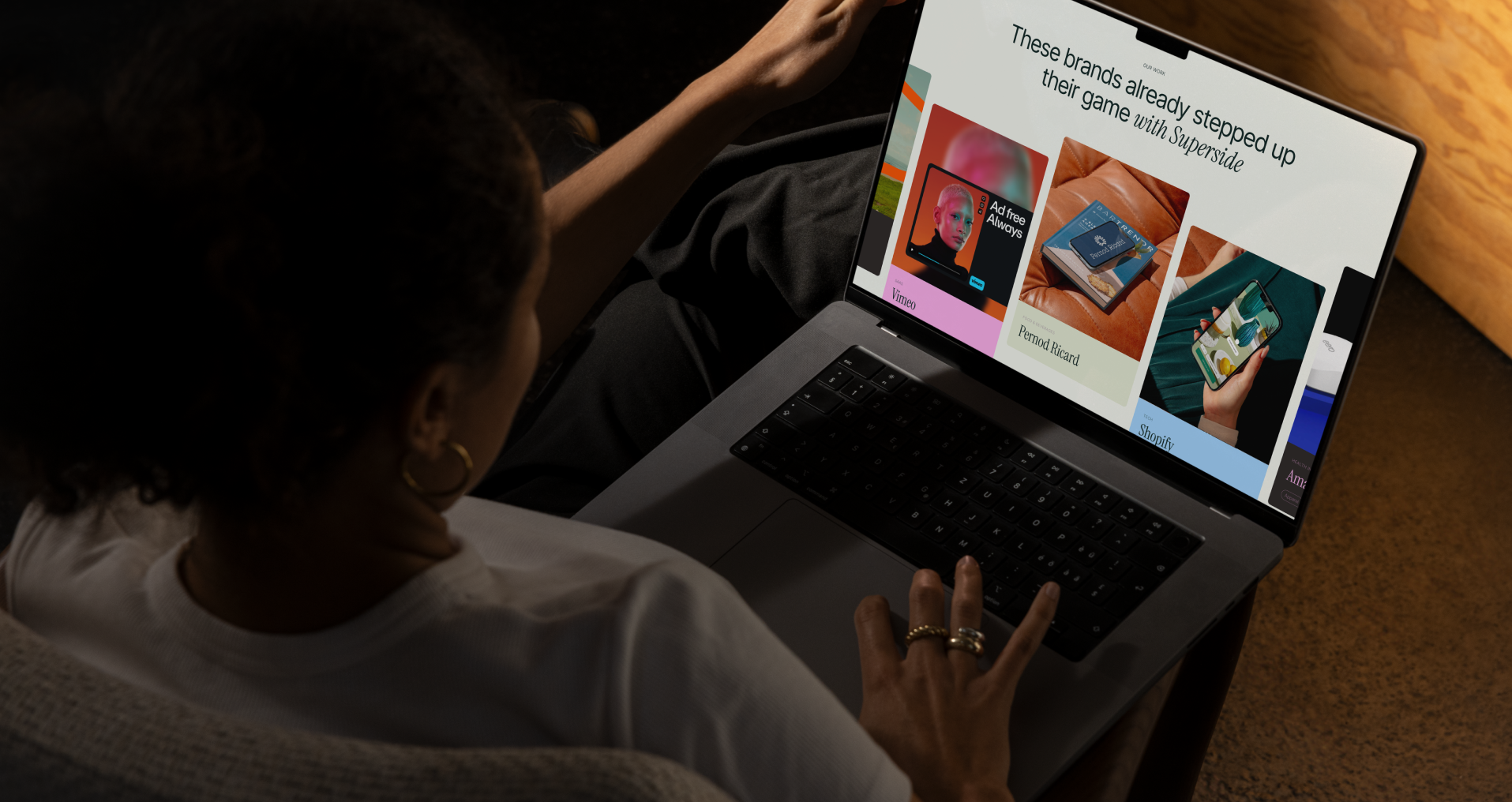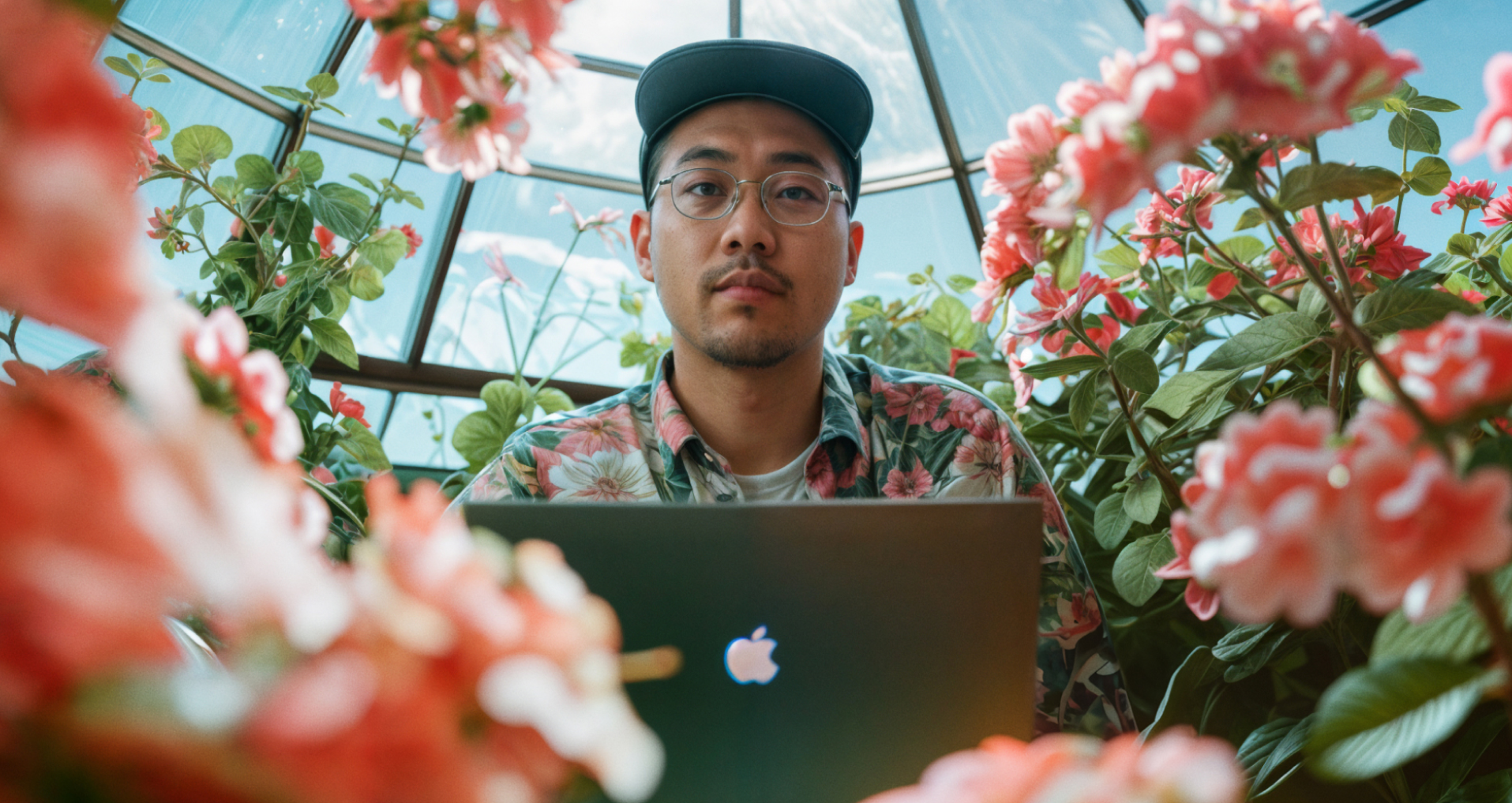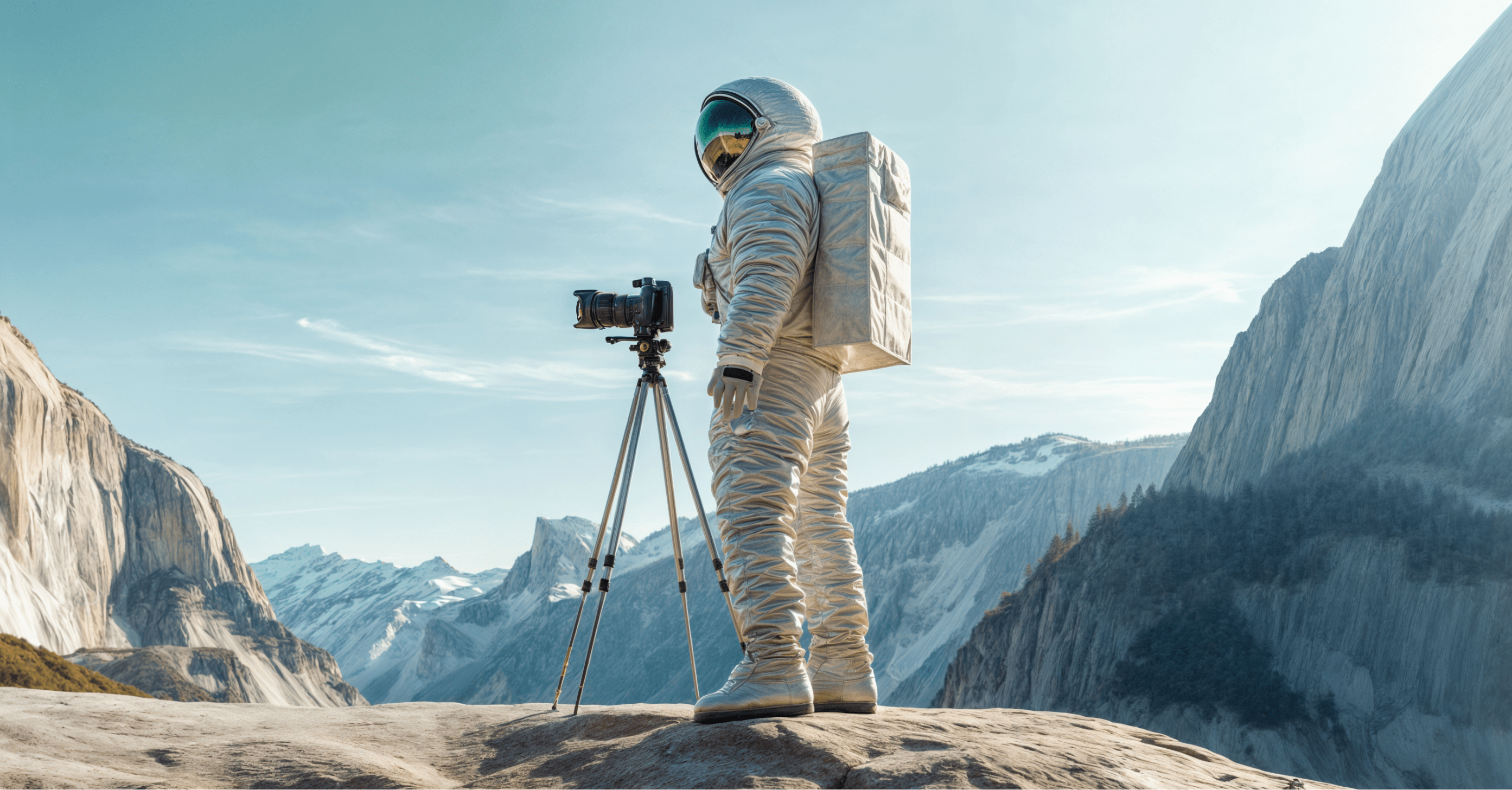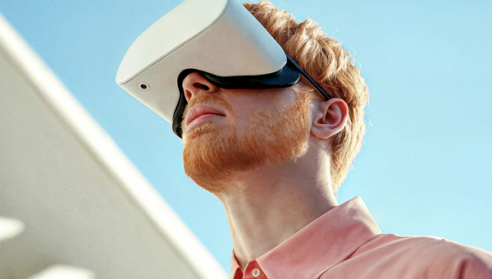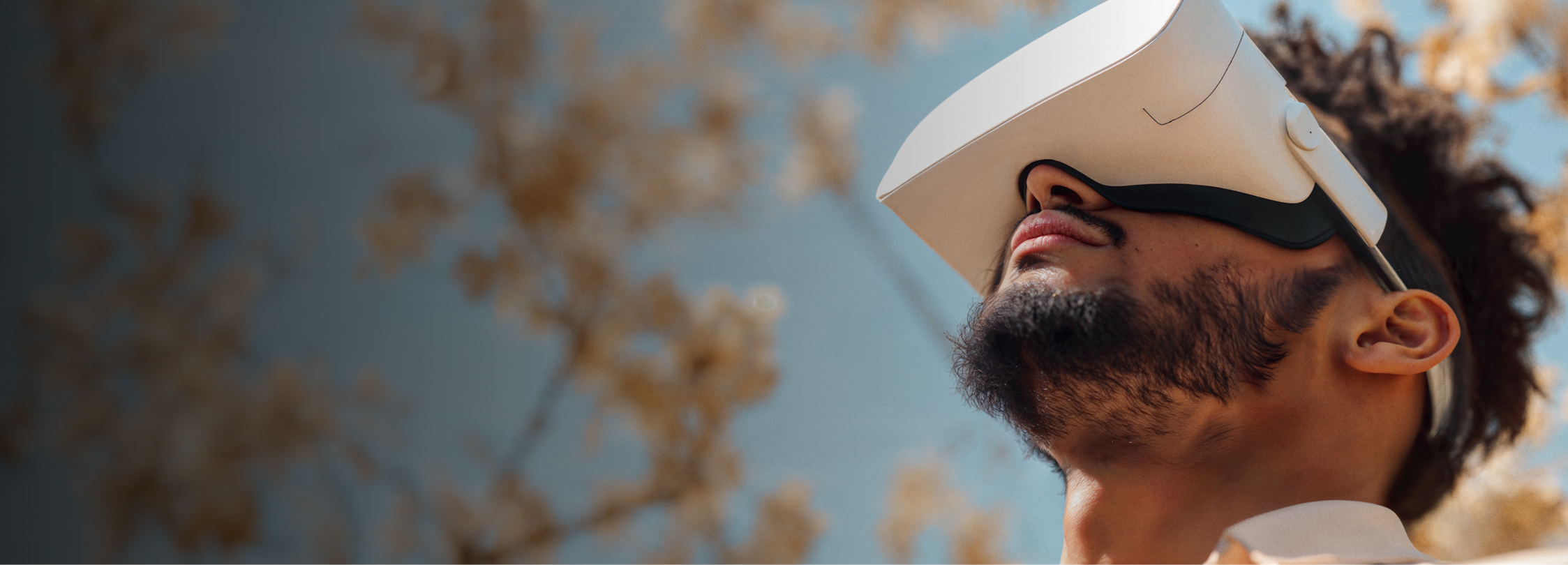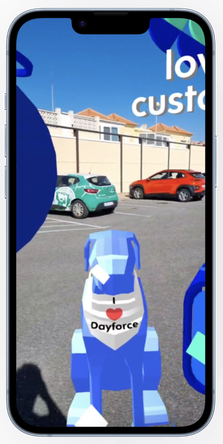Spatial Computing for Brands: Trends & Examples in 2024


Welcome to the new era of marketing. Learn about how brands are leaning into spatial computing to stand out and connect with their audience, challenges you might run into and Superside’s future predictions of this new technology.
Marketing in the new era moves really fast. You’ve probably heard this phrase one too many times. But, that’s because there are new advancements and use cases that come up each and every day. It’s really hard to keep up.
So, today, we’re going to be walking through spatial computing for brands, the basics, the impact and how to apply it to your brand. We’ll also be leaning on Sam MacDermot, Associate Creative Director at Superside who’s been actively looking into how to incorporate spatial computing across the brand.
Let’s dive in!
From AR to VR: The Essentials of Spatial Computing
If you’re anything like me, then understanding the basic principles of a new technology can be incredibly useful when it comes to actually applying it to your work or company.
What is spatial computing?
Spatial computing is an emerging technology field that blends various technologies to merge physical and digital elements, enhancing user interaction and immersion. Its aim is to create a seamless experience between the virtual and physical worlds.
Spatial computing is like bringing your favorite video games and cartoons into the real world. Imagine you could put on special glasses and see animated characters jumping around your living room or use a headset to feel like you're inside a completely different world, like a jungle or space.
In the real world, spatial computing manifests itself across:
- Augmented Reality (AR): You see digital things, like Pokémon or funny filters, mixed with the real world through your phone or special glasses. This can be things like FORM swim goggles or Pokemon Go.
- Virtual Reality (VR): You wear a headset and feel like you’re inside a video game or another world. This is like wearing Meta Quest to ride a roller coaster.
- Mixed Reality (MR): A combination of the two, so digital and real objects can interact together. This is like Apple’s Vision Pro.
The Impact of Spatial Computing on Brand Engagement
As technology evolves, so do brands. That includes everything from how they market their company and products, to finding new opportunities for elevating customer experiences. And, when it comes to spatial computing, there are clear signs that the space will only continue to grow seeing as it’s anticipated that their compounded annual growth rate will be 17.9% from 2023 to 2028.
Adopting ‘Spatial’ as a new medium is an easy next step for our customers. Our lives are 3D dimensional, and we navigate by absorbing content in three dimensions. What spatial computing really does is enable us to inject traditionally screen-based marketing content back into the environment. We can help the customers make that step.

This comes as no surprise as there’s a wide range of applications for driving brand engagement through spatial computing, including:
- Enhancing customer experiences, such as incorporating virtual try-on (VTO) technology across clothing brands.
- Interactive product demonstrations, such as creating virtual prototypes to improve the product development process.
- Immersive storytellings, such as going beyond a TV ad to something that actually immerses your audience into your campaign.
Superside Embraces Spatial Computing in Design and Marketing
At Superside, we’ve always been on the cutting edge of AI design trends and technology, including spatial computing.
AR and AI are not two separate things, they’re very closely related. Almost all AR experiences require AI to operate - to detect your face, to fit glasses to the contours of a face. There are so many other capabilities AR can have, and it all depends on AI to operate.

As a team, we’ve been ahead of the AR boom across customers like Dayforce and 6sense, turning AI and immersive marketing into powerful tools for enhancing user engagement and driving business growth.
Driving Meaningful Connections with Dayforce at In-Person Events
When it comes to live events, how do you distinguish yourself from every other tech company at a conference? It’s not by having a pretty banner, at least not anymore. Instead, we partnered with Dayforce to add AR to their event marketing mix.
Previously known as Ceridian, the team wanted to simplify the customer experience by consolidating multiple brands under the Dayforce umbrella. To unveil their new name, they implemented an AR experience at their annual customer conference INSIGHTS.
After importing each object into Spark AR, we began crafting the augmented reality experience by animating each object and customizing a default template. This allowed users to enlarge the stand, potentially making it as big as a building.

This shows that creating an effective AR experience requires a balance between possibilities and constraints. Perini, our creative AR expert, advises finding the right mix of brand needs, personal taste and engaging filters for the audience.
5 Applications of Spatial Computing for Brands in 2024
Now that we’ve covered the basics, let’s get into the real-world applications of spatial computing for brands.
Earlier in February this year, Apple shook the world by launching its Vision Pro. Even though it’s not the only spatial computing gadget out there in the world, it is definitely the most well-known. Because of the popularity behind it, Vision Pro has put spatial computing technology onto every company’s radar.
But how close are we to the widespread adoption of spatial computing for marketing and brand exposure efforts? This is what Sam Mac has to say about it:
We're technically ready: the latest handsets and headsets integrate digital content into the real world realistically with high resolution and accurate reflections. The main barriers to widespread spatial computing adoption are the form factor and price. Once devices become as easy to wear as glasses and more affordable, mass market adoption will increase.

So, let’s look at 5 spatial computing applications.
1. Enhanced product visualization
When it comes to furnishing your home, IKEA might be at the top of the list of places to check out. However, sometimes it’s hard to envision just how a cabinet or table might look in a space or what other pieces you might need (or want) to complete the look.
In a recent talk, Spatial Computing expert, Martin Enthed, shared the end-to-end process of how IKEA used AR apps to give customers a more realistic experience when it comes to visualizing how furniture and decor items would look in their homes. Similar to VTO technology, this was a great way for the IKEA team to help customers make informed purchasing decisions (and be happier with the end result!)
2. Immersive advertising campaigns
Great brands are great storytellers. Spatial computing technology opens up a new avenue for great storytelling with immersive marketing by bringing AR into advertising campaigns.
It’s no wonder that companies like Coca-Cola, who have been synonymous with great marketing, have leaned into building immersive brand experiences through AR.
In 2023, instead of simply handing out coupons, Coca-Cola launched an AR marketing #TakeATasteNow campaign for their Coke Zero Sugar product. From this campaign, smartphone users could interact with and change the screens’ AR visuals in real-time (and get a free Coke Zero out of it too).
3. Virtual showrooms and retail spaces
Imagine you’re selling to the massive wave of tourists traveling to Europe each summer. Vacations always lead to a new vacation wardrobe. And, while Instagram ads can be really effective, it’s not always easy for someone to hit purchase on an item. Enter: Virtual try-on technology (VTO).
In a recent interview with Fashionista, Google’s Senior Director of Consumer Shopping Product, Lilian Rincon, shared that 55% of online shoppers have returned an item because it looked different on them than expected. On top of that, 42% of shoppers shared that they didn’t feel like the models were representative of them. This is the problem that VTO technology is trying to address.
And it has. According to Snap, Dior saw a 6.2x return on ad spend when implementing its VTO.
See what a VTO technology might look like if you own a pair of Apple Vision Pros:
4. Immersive brand storytelling
One of the coolest applications of spatial computing comes from the sports industry. Now, when you compare your viewing experience from home to being inside a stadium for a basketball game, there are some major differences you might experience.
When you’re home, you’re never confused about what’s going on in the game because you’ve got commentators giving you non-stop play-by-plays of the game. But, when you’re actually in the stadium, you lose the commentators, but you get the vibrancy of being a part of the crowd. You get to feel like you’re a part of the action, part of the storytelling.
With Spatial Computing, you’re able to get the best of both worlds… sort of!
With this application, you’ll be able to get a virtual courtside experience for every game, being able to stand alongside the players for the entire game. Plus, you’ll get the added bonus of being able to follow along with the play-by-play from commentators.
5. Enhanced event experiences
When we look back on the evolution of experiential marketing, we see how brands have become more creative to be able to entice people to come to their trade show booths or events. At a certain point, having a standup banner wasn’t enough. You needed a ball pit or a temporary tattoo stand to draw in the crowds.
With spatial computing gaining more traction, the bar has been set to an entirely new level, pushing brands to evolve their tactics and find creative ways to entice the next wave of consumers at events.
And in some cases, those events don’t even need to be in person. Take the Metaverse for example, brands are now building virtual trade show experiences to draw their audience in.
These virtual trade shows offer customers a new way to interact with and experience brands through a virtual reality lens. And, for brands, they’re also a relatively lower cost and higher accessibility avenue to market to their audience.
Challenges and Considerations of Spatial Computing for Brands
While all of these applications of spatial computing sound incredible, they didn’t come without their challenges. As you start exploring this new avenue for your brand, it’s important to understand the challenges that might come up in this new phase, including:
- Technical challenges: Think of spatial computing as creating a high-tech puzzle. You need advanced hardware, powerful software, and smooth integration to make it all work together. Not to mention the technical expertise and knowledge of your team to tackle technical barriers as they come up.
- User adoption and accessibility: It’s one thing to get your team to adopt and embrace AI across design processes, like scaling ads or website creative. It’s another to take adoption to the next level by incorporating advanced AI-powered technology like AR, VR, and MR. Not to mention a brand new layer of accessibility considerations for teams when developing new brand campaigns.
- Cost and ROI considerations: Investing in spatial computing is like buying a new car. It’s a big upfront cost, and companies need to carefully weigh the potential benefits against the price tag. It's about making sure the long-term benefits, like increased efficiency or enhanced customer experiences, justify the initial investment.
It's evident that overcoming the challenges and considerations around spatial computing is necessary for this technology to become more prevalent and relevant, as Sam mentions:
If spatial as a medium is to become as prevalent as other marketing channels, improvements to the form factor of the devices are key. Ultimately, we can hope to see something like a pair of sunglasses that can place any type of content, anywhere in the world, with millimeter accuracy, in a way that is completely indistinguishable from reality.

To help tackle the cost barriers, we’d love to plug that Superside’s pricing plan includes AR and 3D marketing development at all levels. At the very least, it’ll make the price tag that comes with spatial computing a bit less daunting and more accessible to your team through one single design subscription.
Staying on Top of Trends in Spatial Computing for Brands
It’s not all doom and gloom. There’s also a lot to look forward to when it comes to the future of spatial computing for brands. But, how do you keep your finger on the pulse?
Well, we’d recommend staying up-to-date on emerging trends across the spatial computing world. That includes following influential experts in the space like IKEA’s Martin Enthed and Superside’s Sam MacDermot.
First, we need to consider how brands and customers will adopt spatial computing in their daily lives. Our expert has a few ideas about this:
The adoption of spatial computing will be based on usability, comfort, price, and value. With the Apple Vision Pro, Apple has pushed the boundaries of usability, comfort, and value. We can expect the price to come down over time as the technology becomes easier to manufacture.

Everything indicates increasing relevance of AI in spatial content, as Sam mentions:
In the short term, AI will allow us to generate a high volume of spatial content at a fraction of the cost. In the long term, the spatial content audiences see may be dynamically generated just for them. Imagine seeing marketing content for a brand that speaks to the viewer's individual preferences at that moment.

Sam also recommends attending industry events industry events such as Augmented World Expo, which is the premier industry conference for spatial computing.
For future developments to Apple's Vision Pro, their yearly WWDC and the library of technical sessions are the best ways to follow their progress. There is also AWE (Augmented World Expo), a conference dedicated to all things AR/VR/Spatial.

Superside: Riding High on the Spatial Computing Wave
If you’re keen on exploring this new wave of AI-powered brand campaigns, the best day to start is yesterday. The second best is today. As we’ve already seen. some of the world’s most creative brands have already started rolling out spatial computing brand campaigns, so it’s time to explore that for yours too!
If you’re looking for a partner-in-scale, Superside is ready to work alongside your team to help you explore how to get started with spatial computing across your brand experiences.
Hiba Amin is a Contributing Writer at Superside. As a marketing leader who lives and breathes content, she's had the privilege of heading up content teams and has also been in the trenches as a marketing team of one. She's worked at a wide range of tech companies across PLG, SaaS and most recently, AI. Say hi to her on LinkedIn (and ask her about her dog, Milo!).
You may also like these

The 12 Best 3D Design Services & Companies for 2025
Three-dimensional (3D) design has significantly impacted the world of design and marketing, and now its impact is growing with unprecedented speed. The 3D market, already worth over US$3 billion, is set to expand to an incredible US$8.14 billion by 2030.If you’re a marketer looking to engage audiences and drive conversions at never-before-seen rates, tapping into 3D design should be a priority. With scores of companies offering 3D services, it pays to do your research before choosing the best 3D design partner for your brand.We’ve done the legwork for you with a curated list of 2025’s top 3D design companies globally. Discover why 3D design should be on your radar, how to choose the perfect 3D design company (a time-consuming process), and why Superside might be just the creative partner you need.3D Design in 2025 and Why It’s Essential for Modern BrandsThe role of 3D design in marketing and branding has reached new heights in 2025. From immersive product visualizations to interactive marketing campaigns, 3D design is no longer a luxury—it’s a necessity. Brands that embrace 3D design gain a significant edge, crafting experiences that captivate and convert audiences like never before.
Top 8 Augmented Reality Design Agencies in 2025
Seeing that purse sitting on their kitchen table through their phone screen to judge its size in real life. Being immersed in a digital booth at a tradeshow to learn something new or interact with a brand. Virtually participating in a campaign through an augmented reality (AR) face filter, and posting a selfie on Snapchat, TikTok or Instagram.These are all ways people want to use augmented reality in their everyday lives right now. Shopping is the number one way people want to use AR: 84% want to interact with a product before buying, 70% say it makes shopping easier and 74% of brands using AR for commerce say it improves customer loyalty and reduces returns. But, there are so many use cases for B2B, too.In fact, there’s a big misunderstanding going on right now: 90% of brands still think AR is “just for fun” or doesn’t have a high ROI.That means, it's actually the perfect time to use an augmented reality design agency to advance your marketing, win over customers and create immersive brand experiences people won’t soon forget.
How and Why Brands Are Embracing Immersive Marketing
If your brand is the sum total of a person’s interactions with you, your product, and your team, what would you achieve if you could build reality around them?That’s the essential promise of immersive marketing.By crafting a custom experience that brings customers and prospects into a world of your design, you can show them what your brand stands for in a truly transformative and unforgettable way.With the support of our Creative Director for Immersive Design, Maryna Razakhatskaya, let’s dive into how you can do that. And, yes, examples are included.What Is Immersive Marketing?
